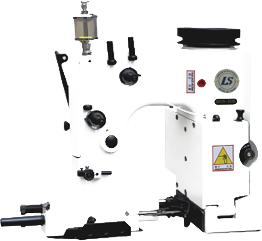what do overlockers do
What Do Overlockers Do?
Overlockers, also known as sergers, are specialized sewing machines designed to produce professional-quality seams and finish the edges of fabric pieces. They are an essential tool for both home sewers and professional garment makers, offering a myriad of functions that streamline the sewing process.
What Do Overlockers Do?
Another key feature of overlockers is their speed and efficiency. Unlike conventional sewing machines, which create stitches one at a time, overlockers can sew and finish edges simultaneously. Many models are capable of sewing at high speeds, which significantly reduces the time needed to finish a project. This speed is particularly beneficial in a commercial setting, where efficiency is critical to productivity and profitability.
what do overlockers do

Overlockers can also create a variety of stitch types beyond the simple overlock stitch. Many machines offer differential feed settings, allowing users to adjust the way fabric is fed through the machine. This feature helps to prevent wavy seams on lightweight or stretchy fabrics, ensuring a professional finish. Additionally, some overlockers can perform cover stitches or rolled hems, expanding their functionality for different sewing techniques.
Using an overlocker can greatly enhance the quality of sewing projects. It allows for more durable seams and higher-quality finishes, which can make garments look more polished and professionally made. Furthermore, overlockers often come with various thread options, enabling sewists to experiment with different colors and textures for decorative effects.
In conclusion, overlockers play a crucial role in the sewing world by providing clean, durable edges and efficient sewing solutions. Whether you are a hobbyist working on home projects or a professional in the garment industry, an overlocker can be an invaluable addition to your sewing toolkit. Its unique capabilities enhance both the quality and speed of your projects, ultimately elevating the craft of sewing.
-
Heavy Duty Leather Sewing Machine: A Must-Have for Professional LeatherworkNewsMay.28,2025
-
Leather Sewing Machine: Essential for High-Quality LeathercraftNewsMay.28,2025
-
Extra Heavy Duty Sewing Machine for Premium Leather ApplicationsNewsMay.28,2025
-
Walking Foot Cylinder Arm Sewing Machine: Precision and Power CombinedNewsMay.28,2025
-
Industrial Cylinder Arm Sewing Machine: Engineered for High-Performance StitchingNewsMay.28,2025
-
Cylinder Bed Sewing Machine: A Powerful Solution for Precision StitchingNewsMay.28,2025
-
Zigzag Sewing MachineNewsMay.12,2025





























